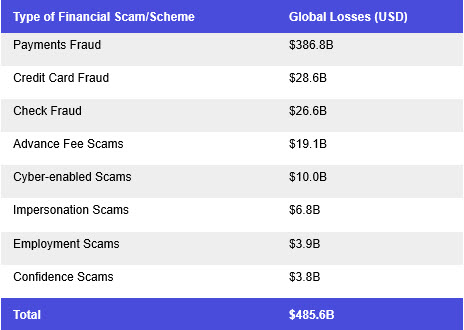WCF Financial Bank Closed
All WCF offices will be closed on Monday, January 19, 2026 in observance of Martin Luther King, Jr. Day. All items processed after 5:00 PM on Friday, January 16th will post on Tuesday, January 20, 2026.
As a consumer, you may be concerned about fraud. Perhaps you’ve been a victim of fraud and understand the huge inconvenience that follows as you try to undo the damage.
Visual Capitalist says, "In 2023, there were $485.6 billion lost in total from financial scams." Below is a breakdown of the scams that generated the biggest losses:

As a consumer and customer, you can do a lot by arming yourself with knowledge of cybercriminals – what their motivation is, what methods they use, and the tools they use to trick you.
Don't send sensitive information over the internet without checking the website's security. Look for URLs that begin with "https" – the ‘s’ stands for secure – rather than "http." A website safety checker like Google Safe Browsing helps, too.
Immediately change any passwords you might have revealed. Consider reporting the attack to the Internet Crime Complaint Center (IC3) and the police, and file a report with the Federal Trade Commission.
If you identify suspicious activity involving your institution, contact them immediately.